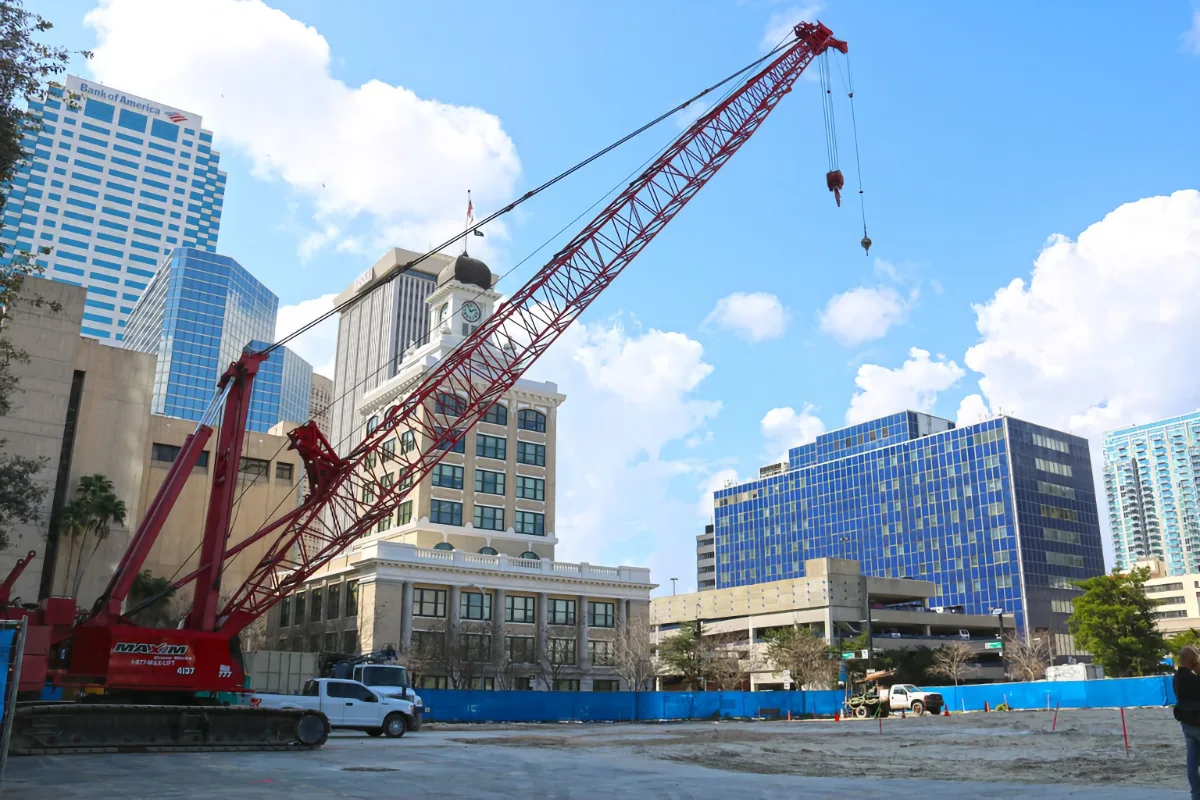Tampa City Council sits as the Community Redevelopment Agency (CRA) Board Thursday morning with land use hearings that evening. Technically, there’s one non-land-use item on the evening agenda: the first hearing for the FY26 Annual Action Plan, which is made up of several state and federal grants totaling $13.2 million. These grants generally come with stipulations on how they are spent, but they are all related to housing and community development needs. $5 million is the federal Housing Opportunities for People With AIDS (HOPWA) grant, which is administered regionally. Regardless, there’s a 5-year action plan; this is the 4th year, and two public hearings are required for the adoption of the plan update. The remainder of the evening will consist of rezoning hearings; check the agenda and map for more details. And speaking of maps: I have updated the main future-land-use map. Most of the changes are under the hood, but one significant change is that it now defaults to current zoning, not future land use. Additionally, the agenda map now uses the underlying zoning maps, so you can view the rezoning application location with the zoning directly from the agenda page.
For the CRA Board meeting, there are 6 items that require action by the board. Regarding the first item, it’s not clear from the draft agenda what is being requested. There’s a presentation attached that makes it look like the developers are asking for $5 million from the East Tampa CRA district. A staff report notes the East Tampa Citizen Advisory Council (CAC) approved $2 million for the project. The CAC is non-binding, but they are appointed by the board to advise; more on that later. What is clear is that it’s a 20-unit building with a majority of the units 1 bedroom with 640 square feet of living space. Small. The proposal is to cap the income of the units at 80% AMI. For an individual, that’s roughly $53,500 per year. 30% of income towards housing, by month, is $1337. That’s approximately what the units would cost. That’s pretty close to market rate for a 1BR apartment, setting aside square footage. So the question is, are we simply paying them $5 million to cap the income of the tenants while they basically charge market rate, or are we using East Tampa CRA funds to subsidize housing in historic Ybor? (The property is in the northwest corner of the historic district and was reluctantly approved by the Barrio Latino Commission).
The second item the board is being asked to vote on consists of proposed changes to the commercial grants program. The one I want to highlight gets to a project that I have pointed to a couple of times — also in the East Tampa CRA district, but also more generally considered historic Ybor — the JC Newman Cigar Company development of the Sanchez Y Haya Real Estate Company building. In March, the CRA Board approved a $5 million dollar grant for their project — approved on consent without a presentation or discussion, despite the fact that the CRA Board knew that the CAC had reservations about the size of the grant. (Again, more on that later). In May, the JC Newman Cigar Company was approved for first reading of 4 special—use alcohol sales permits for their properties, which included the Sanchez Y Haya Real Estate Company building. One of the proposed changes being presented by staff is to revoke the rule “Restaurants holding 4COP or Special Use (SU) licenses are currently ineligible for grant funding due to the lack of provisions limiting their revenue from alcohol sales”. And before anyone accuses me of grinding an axe on this project, I try very hard to separate my personal opinions on individual projects from what I write here. But 25 years ago this year, my partner and I purchased the home we still live in. It’s in the northwest corner of the East Tampa CRA. So yes, I personally have opinions on how best the CRA should be spending the funds that we have been contributing to, and I do question if $5 million for a private developer to build a boutique hotel and restaurant is the best use of that money. That could be 50 $100,000 grants for truly small businesses. Yes, I would like to see a historic building preserved. And if this was to repurpose the building into affordable housing, or hell, even artist lofts and a gallery, I would be more inclined to support it. But for what’s planned? And then to find out that the current rules for commercial grants do not allow such a use? How was the grant processed and approved? Did the developer leave out the plan for special use alcohol sales? And is the CRA now trying to cover that up by changing the rules? These are questions I would be asking regardless of where I lived in the city. If we are running out of projects to spend money on without subsidizing liquor sales, pack up the CRA. And to be clear, this has nothing to do with places that serve beer and wine to compliment their food offerings; they’re totally eligible for a commercial grant under the current rules. The distinction is “special use” and full liquor with no limitation on percentage of total sales.
So about the East Tampa CAC: there has been a steady drumbeat during public comment from longtime advocates for East Tampa — both current and former CAC members — that there are problems. Problems with staff, problems with the feeling that projects are being pushed down their throats, and problems with making recommendations to the CRA Board that are then ignored. Chair Henderson, who represents East Tampa on city council, conveyed during a meeting after the Sanchez Y Haya Real Estate Company vote that the CAC is just one opinion, while the board decides. Why appoint a CAC then? Why would anyone want to serve on a volunteer board if their representative on council tells them their opinion doesn’t really matter? They could just show up for public comment or send an email and it would mean the same thing. I’ll also add, from my observations, that when the downtown CAC declines to approve a project, they aren’t ignored with the project presented to the board anyway. The developer reworks to address the CAC’s objections and then obtains approval before advancing.
The issues with the East Tampa CRA district aren’t new, and they run deep. How the original CAC was set up, and how the city has grown, wasn’t congruous. Changes were made, but the changes were not articulated to the community very well, nor were they implemented properly. My neighborhood civic association is currently part of the CAC, approved by council, but the representative wasn’t voted on by the neighborhood association. They don’t attend civic association board meetings and brief them about what is happening in the district, or get input on proposed projects. They were afraid their property value would decrease with the CRA building “affordable housing” on land purchased in our neighborhood, so they went and applied for the board to stop it. That’s who council approved to be on the CAC. If you mix that with longtime advocates for true redevelopment, the results are going to be things like $5 million for a boutique hotel and restaurant despite the strong opposition from the core constituency of a neglected part of the city — a part of the city I care deeply about.
The current CRA Board owns this problem and they need to fix it. This can’t be blamed on past boards or the mayor. But that’s what happens when you run an agency this big for the past 3 years with an interim director for the majority of that time, and then only show up for 2-3 hours a month to address it.
On a lighter note, next week council is off with the celebration of Juneteenth. They return the following week for a final regular meeting before a 2-week vacation to start July, returning on the 17th for the mayor’s budget presentation.




